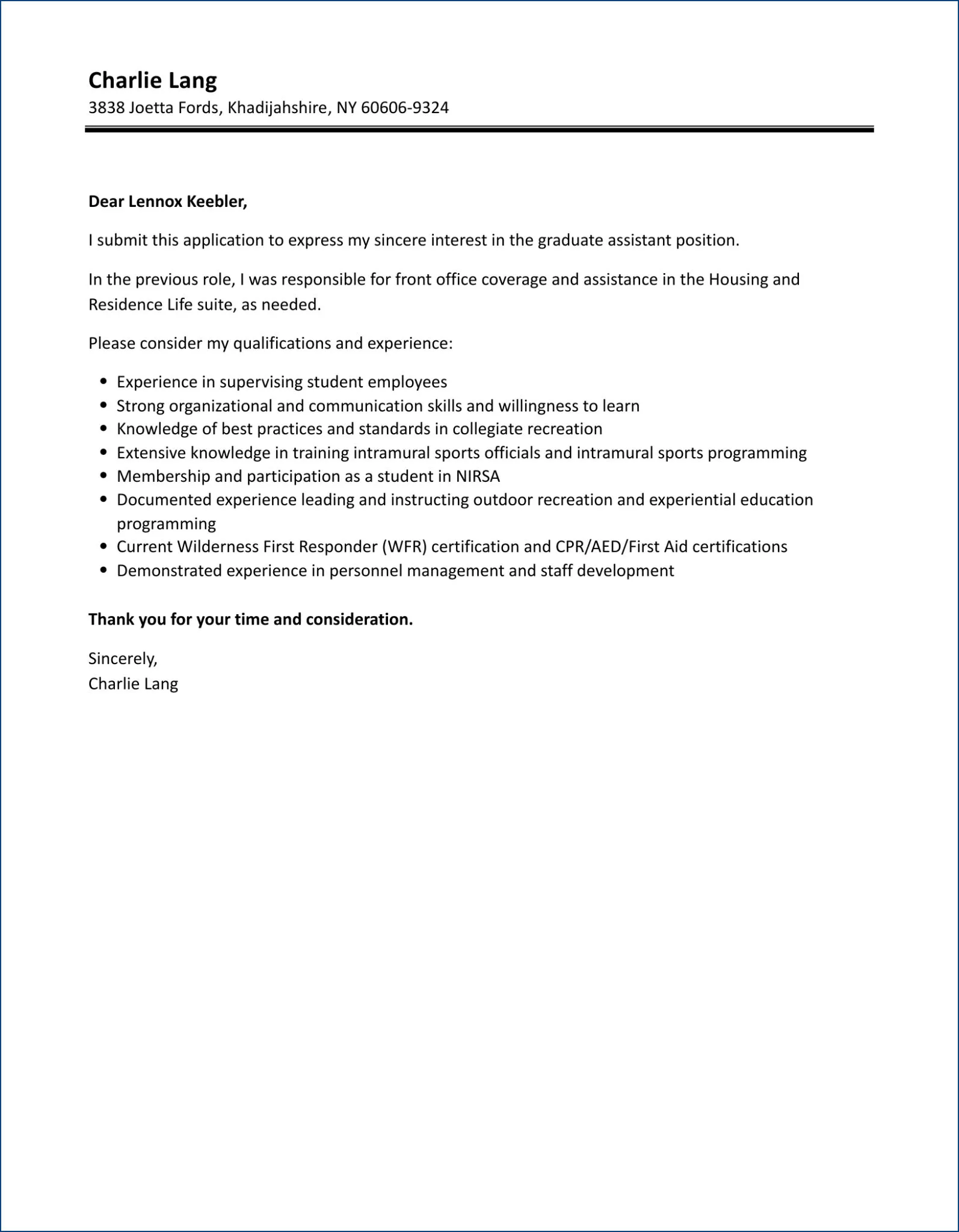Crafting Your Physician Assistant Cover Letter
A well-crafted physician assistant (PA) cover letter is a crucial tool in your job search arsenal. It provides you with the opportunity to introduce yourself, highlight your skills and experience, and express your enthusiasm for a specific position. Unlike a resume, which is a summary of your qualifications, a cover letter allows you to showcase your personality, explain your career goals, and demonstrate how your unique skills align with the needs of the employer. This guide provides you with a comprehensive template and best practices for creating a compelling cover letter that will get you noticed and land you an interview.
Researching the Employer
Before you even begin writing, thorough research is essential. This demonstrates your genuine interest in the position and allows you to tailor your letter to the specific needs of the employer. Start by visiting the company’s website. Explore their mission, values, and the services they offer. Look for news articles, press releases, and social media profiles to gain a deeper understanding of their current initiatives and strategic goals. This research will provide valuable insights that you can incorporate into your cover letter, making it more relevant and impactful. Knowing the employer shows them that you’ve taken the time to learn about their organization. This also allows you to customize your letter to show how your values and experience aligns with the organization.
Understanding the Company Culture
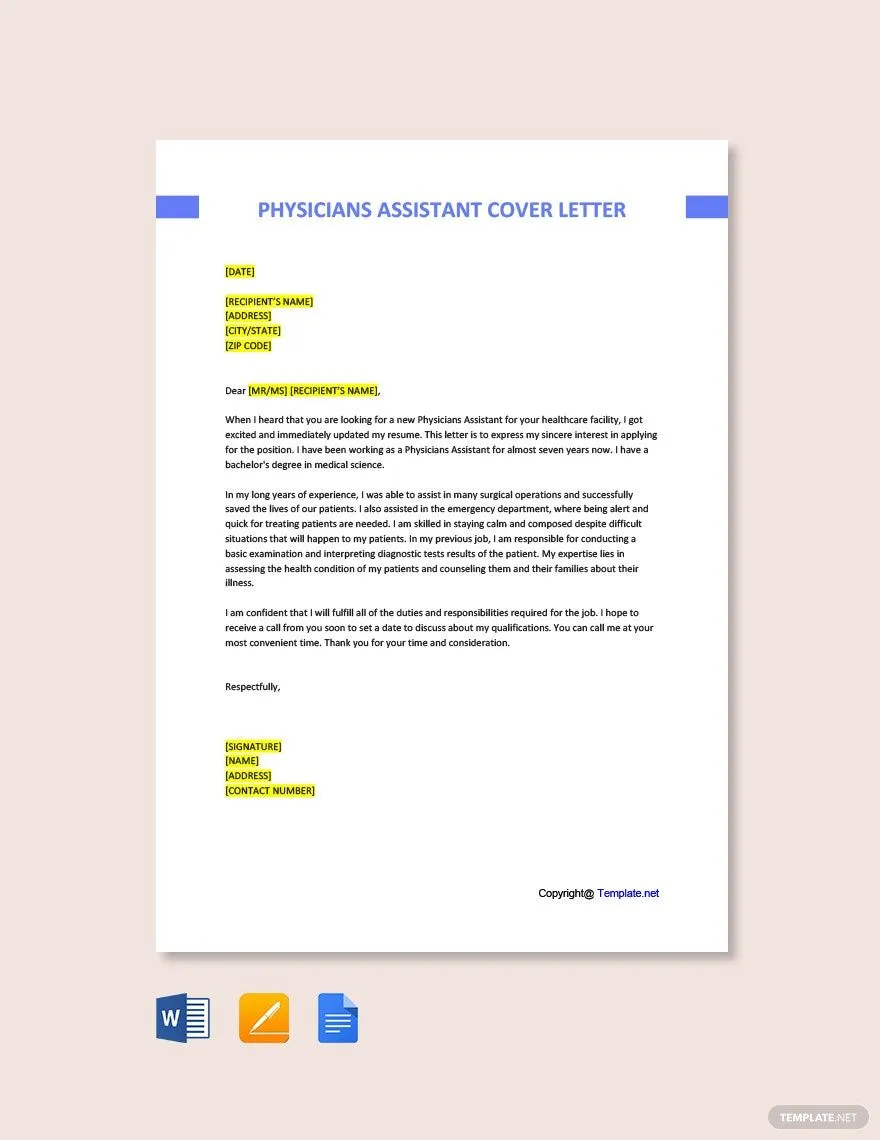
Delving into the company culture is a key step in crafting a persuasive cover letter. Does the organization emphasize teamwork, innovation, or patient-centered care? Look for clues on their website, in employee testimonials, and on social media platforms. Understanding the work environment can help you align your language and tone to resonate with the hiring manager. For example, if the company values collaboration, highlight your experience working in multidisciplinary teams. If they prioritize innovation, mention any relevant research or projects you’ve been involved in. Showing that you understand and appreciate the company culture signals that you’re a good fit and increases your chances of getting an interview.
Identifying Key Requirements
Carefully review the job description and identify the key requirements. Make a list of the skills, qualifications, and experiences the employer is seeking. Then, assess your own qualifications and determine which aspects of your background best align with these requirements. This step is crucial because it will guide you in selecting the information to include in your cover letter. Focus on highlighting the aspects of your experience that directly address the needs of the employer. By demonstrating that you possess the skills and qualifications they’re looking for, you’ll increase your chances of moving on to the next stage of the hiring process. Matching the requirements creates a personalized touch and helps the employer know that you read the job description carefully.
Formatting Your Cover Letter
The formatting of your cover letter is just as important as the content. A well-formatted letter is easy to read, professional in appearance, and leaves a positive first impression. Always use a standard font, such as Times New Roman or Arial, with a font size between 10 and 12 points. Use single spacing within paragraphs and double spacing between paragraphs. Use clear headings and bullet points to organize the information and make it easy to scan. Keep your letter to one page, and ensure that there are no typos or grammatical errors. A clean, professional format demonstrates attention to detail and respect for the reader’s time. Use the template below as a guide to format your cover letter and follow the standards mentioned.
Header Information
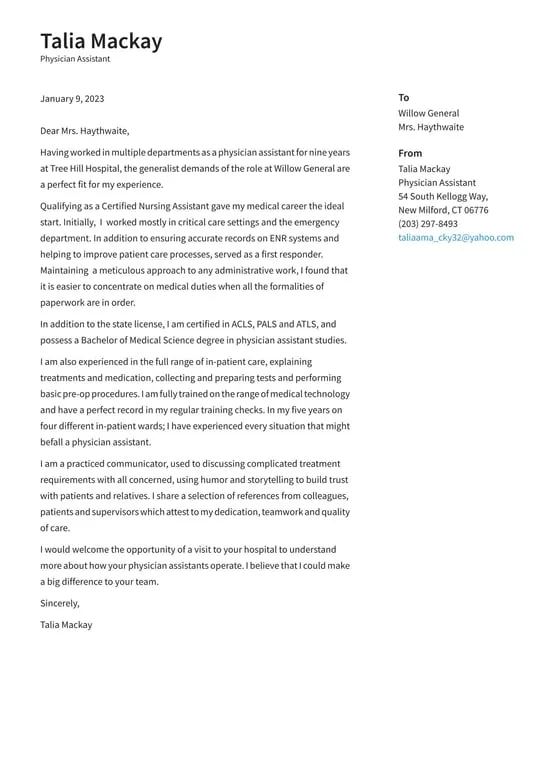
Your header should include your full name, address, phone number, and email address. If applying online, ensure your email address is professional. You should also include the date and the name and address of the hiring manager, if known. If the hiring manager’s name isn’t known, research the organization website to find who you should address the letter to. This is the first impression that you can show. Proper formatting shows professionalism. This information allows the hiring manager to easily contact you. A well-formatted header demonstrates attention to detail.
Salutation
Start your cover letter with a professional salutation, such as “Dear Mr./Ms./Dr. [Last Name].” If you don’t know the hiring manager’s name, use “Dear Hiring Manager” or “Dear [Department Name] Team.” Avoid generic salutations like “To Whom It May Concern.” The salutation sets the tone for the letter and demonstrates respect. Addressing the hiring manager by name, if possible, shows that you’ve taken the time to personalize your application and research the company. Doing the research to discover their name and address them shows you are taking the job seriously.
Body Paragraphs
The body of your cover letter is where you sell yourself to the employer. It should consist of three to four well-structured paragraphs. Each paragraph should address a specific aspect of your qualifications and experience. The key to a strong cover letter is to provide concise, impactful information that will leave a positive impact. The body paragraphs should clearly demonstrate your skills, experiences, and enthusiasm. They should reflect the research you conducted in the initial phase. Each paragraph should have a clear purpose and contribute to the overall message. This section is where you showcase your value proposition and explain why you’re the best candidate for the job.
Opening Paragraph: Grabbing Attention
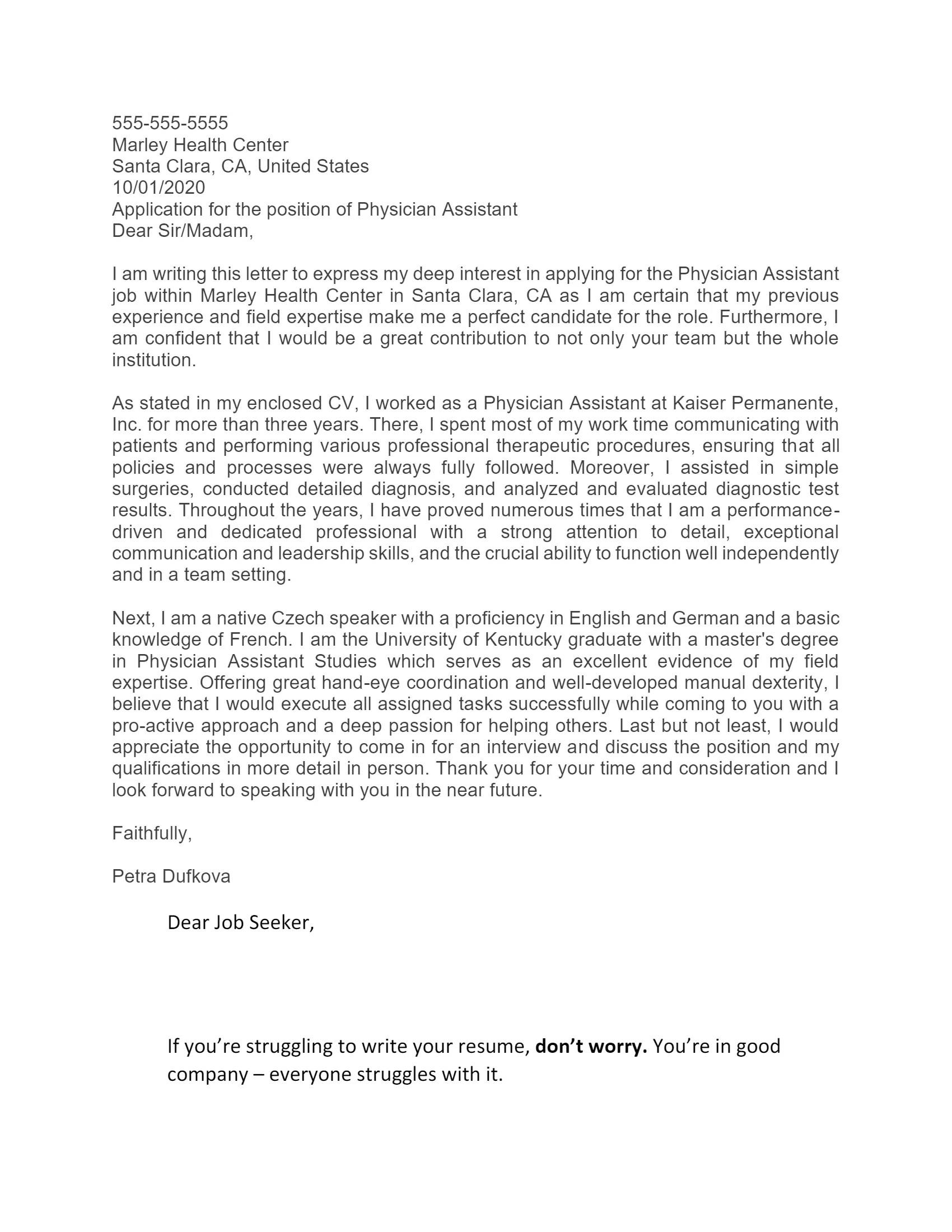
Your opening paragraph should immediately grab the reader’s attention and make them want to continue reading. Start by stating the position you’re applying for and where you saw the job posting. Then, briefly explain why you’re interested in the position and the company. Consider starting with a compelling statement that highlights your key qualifications or achievements. For example, you might mention a successful project you led, a specific skill you possess, or your passion for patient care. The opening should set the tone for the rest of the letter and motivate the hiring manager to learn more about your candidacy. A strong opening paragraph makes you stand out from other candidates.
Highlighting Relevant Skills and Experience
In the subsequent paragraphs, highlight your relevant skills and experience. Provide specific examples to support your claims. Instead of simply listing your responsibilities, describe how you used your skills to achieve positive results. For example, if the job description requires strong communication skills, describe how you effectively communicated with patients, families, and other healthcare professionals. Focus on experiences that align with the job requirements and demonstrate your ability to succeed in the role. This is your chance to showcase your expertise and demonstrate how you can add value to the organization. Use action verbs, such as “managed,” “developed,” “implemented,” or “achieved.” This makes your statements more active and engaging.
Quantifying Achievements
Whenever possible, quantify your achievements. Using numbers to support your claims adds credibility and makes your accomplishments more impactful. For example, instead of saying you improved patient satisfaction, state that you “increased patient satisfaction scores by 15%.” Quantifying your achievements helps the hiring manager understand the impact of your work. Use metrics to highlight the value you can bring to the organization. This shows the hiring manager the real impact that you can make by joining the organization. The more specific your examples, the better. This helps hiring managers assess your capabilities and skills.
Expressing Enthusiasm and Fit
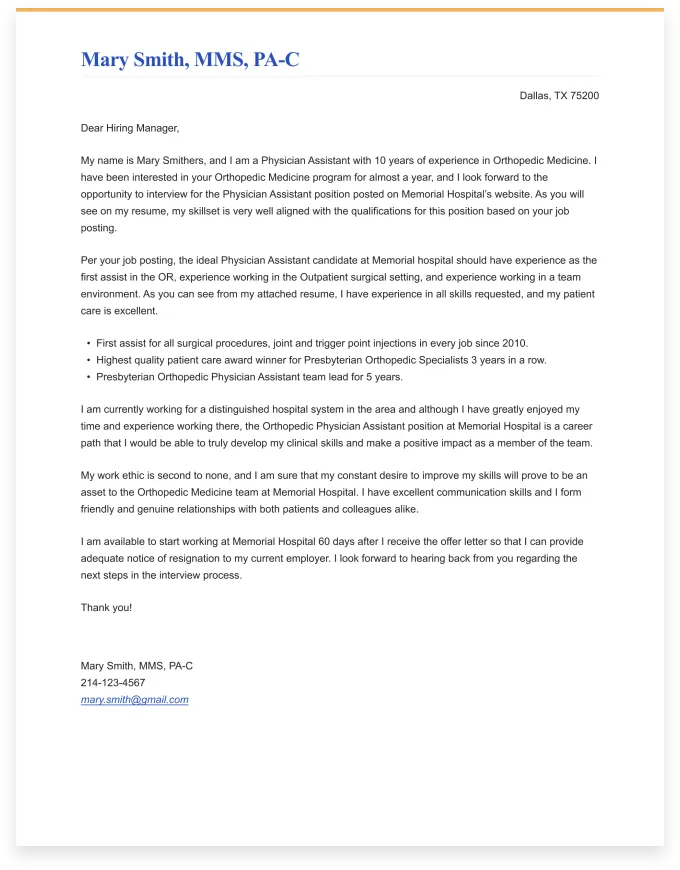
Throughout your cover letter, express your enthusiasm for the position and the company. Explain why you’re interested in working for this particular organization and how your goals align with their mission. Show that you’ve done your research and understand the company culture. Demonstrating genuine interest increases your chances of getting an interview. Also, emphasize how your skills and experience make you a good fit for the role. This is where you connect your skills to the needs of the employer. A cover letter can also show your personality and why you like the work. Make sure the tone is professional and shows how you align with the organization.
Closing Paragraph: Call to Action
Your closing paragraph should reiterate your interest in the position and include a call to action. Thank the hiring manager for their time and consideration. Then, express your availability for an interview. Clearly state how they can contact you. For example, you might say, “I am eager to learn more about this opportunity and discuss how my skills and experience can benefit your team. I am available for an interview at your earliest convenience and can be reached at [phone number] or [email address].” The call to action encourages the hiring manager to take the next step and contact you. Make it easy for them to get in touch.
Professional Closing and Signature
End your cover letter with a professional closing, such as “Sincerely,” “Respectfully,” or “Best regards.” Below the closing, leave space for your handwritten signature. If you are submitting an electronic application, you can simply type your name. Make sure your closing is appropriate for the tone of your letter. Your signature should be legible. Ensure that the signature is included on the application. Make sure all parts of your cover letter are consistent, so that you make the best first impression possible.
Reviewing and Editing Your Cover Letter
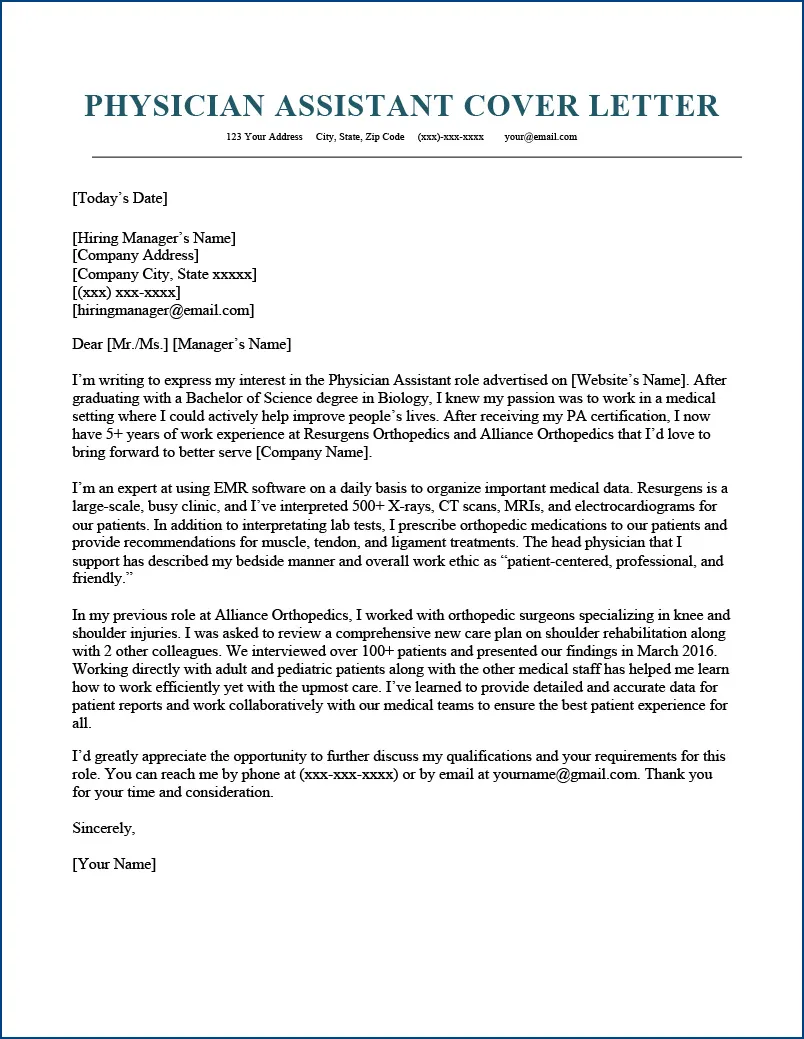
Once you’ve finished writing your cover letter, take the time to review and edit it carefully. This is an important step in ensuring your cover letter is polished, professional, and free of errors. Reviewing will ensure that the document is the best it can be. Take breaks when writing a cover letter. Come back later to review your work with fresh eyes. This allows you to identify errors and improve your writing. This process will also help make sure that the letter is the best it can be.
Proofreading for Errors
Proofread your cover letter for any spelling, grammar, and punctuation errors. Errors can damage your credibility and make a negative impression. Pay close attention to your word choice, sentence structure, and overall clarity. Use a spell checker and grammar checker, but don’t rely on them completely. Read your letter aloud to catch any awkward phrasing or sentence structure problems. Also, look for consistency in font, spacing, and formatting. Make sure all elements of your cover letter are consistent. The best cover letters will be proofread multiple times to make sure no mistakes are present.
Seeking Feedback
Ask a trusted friend, colleague, or career advisor to review your cover letter and provide feedback. They can offer a fresh perspective and identify areas for improvement. Ask them to look for any errors, inconsistencies, or areas where your message could be clearer. They can also assess whether your cover letter is well-written, engaging, and persuasive. Be open to their suggestions and willing to make revisions based on their feedback. Seeking feedback is an important step in ensuring your cover letter is the best it can be. They can help you fine-tune your cover letter. They can also help point out areas that need more work.
Tailoring Your Cover Letter
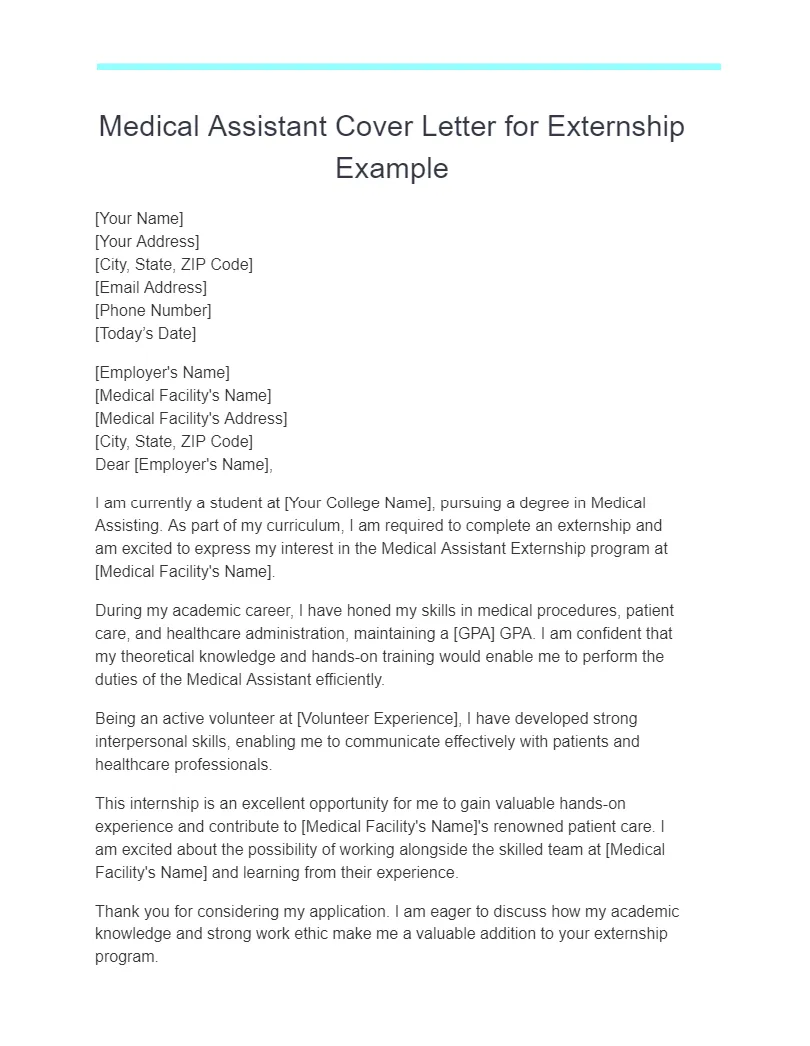
Customize your cover letter for each job you apply for. Generic cover letters are unlikely to impress hiring managers. Tailoring your cover letter will show that you have a specific interest in the position. Take the time to adjust your cover letter to align with the requirements of each job. This shows that you’ve done your research and understand the needs of the employer. This is the most effective way to demonstrate your interest. A generic cover letter is an immediate red flag. Customize your cover letter to improve your chances of getting an interview.
Addressing Specific Job Requirements
Carefully analyze the job description and identify the key requirements. Then, tailor your cover letter to address those specific requirements. Highlight the skills and experiences that align with what the employer is looking for. Use the same keywords and phrases that are used in the job description. If the job requires experience in a specific area, provide examples of your relevant experience. By addressing the specific requirements, you demonstrate that you’re a strong fit for the role and increase your chances of getting an interview. Customize your letter by following the exact requirements of the job description. This is an easy way to impress the hiring manager and demonstrate that you read the job description.
Matching Skills to Job Descriptions
Carefully match your skills to the requirements outlined in the job description. Create a list of the skills and qualifications the employer is seeking and a list of your skills. Look for areas of overlap. Then, highlight those matching skills in your cover letter, providing specific examples of how you’ve used those skills in the past. Use the same keywords and phrases that are used in the job description. This will help you get past the Applicant Tracking System (ATS) and catch the attention of the hiring manager. Matching your skills shows that you can do the work. Skills matching is a great way to highlight relevant skills. This also helps you sell yourself to the hiring manager.
Using Keywords Effectively
Incorporate relevant keywords from the job description into your cover letter. Keywords help your application get noticed by Applicant Tracking Systems (ATS) and hiring managers. While tailoring your letter, incorporate keywords. Don’t just insert keywords randomly. Use them naturally within the context of your sentences. Also, make sure you’re using keywords related to your skills and experience. This improves your chances of getting noticed and makes it easy for the hiring manager to assess your qualifications. Strategic keyword use can help your cover letter stand out.
Demonstrating Passion for the Role
Showcase your passion for the role and the healthcare field. Demonstrate your genuine interest in the company and explain why you’re excited about the opportunity. Highlight your enthusiasm by discussing the aspects of the job that most appeal to you and how your skills and experience align with the company’s goals. You can share your personal experiences, goals, and values to make your passion known. Passion is contagious, so let the hiring manager know that you are excited about the role. Expressing enthusiasm is a great way to make a strong impression and set yourself apart from other candidates. Passion adds a personal touch. Passion also shows that you are the best fit for the job.
Showcasing Knowledge of Healthcare
Demonstrate your knowledge of healthcare by highlighting your experience and education. Mention any specific areas of expertise or certifications you hold. Also, show that you understand the challenges and opportunities in the healthcare industry. You can also highlight how you stay informed of the current issues. Discuss any relevant research, training, or continuing education courses. Use industry-specific terminology to show that you’re familiar with healthcare. Showcase your knowledge by expressing familiarity with medical terminology and procedures. Showing that you’re knowledgeable makes a good impression.
Expressing Commitment to Patient Care
Healthcare is about patients, so demonstrate your commitment to patient care. Highlight any experiences that demonstrate your empathy, compassion, and ability to provide excellent patient care. Provide examples of times when you went above and beyond to help a patient. You can discuss your philosophy on patient care and how you approach patient interactions. Always emphasize the importance of patient well-being and satisfaction. By expressing your commitment to patient care, you’ll show the hiring manager that you’re a caring, empathetic, and dedicated healthcare professional. This shows your values align with the organization. Emphasizing your commitment will help create a strong first impression.
